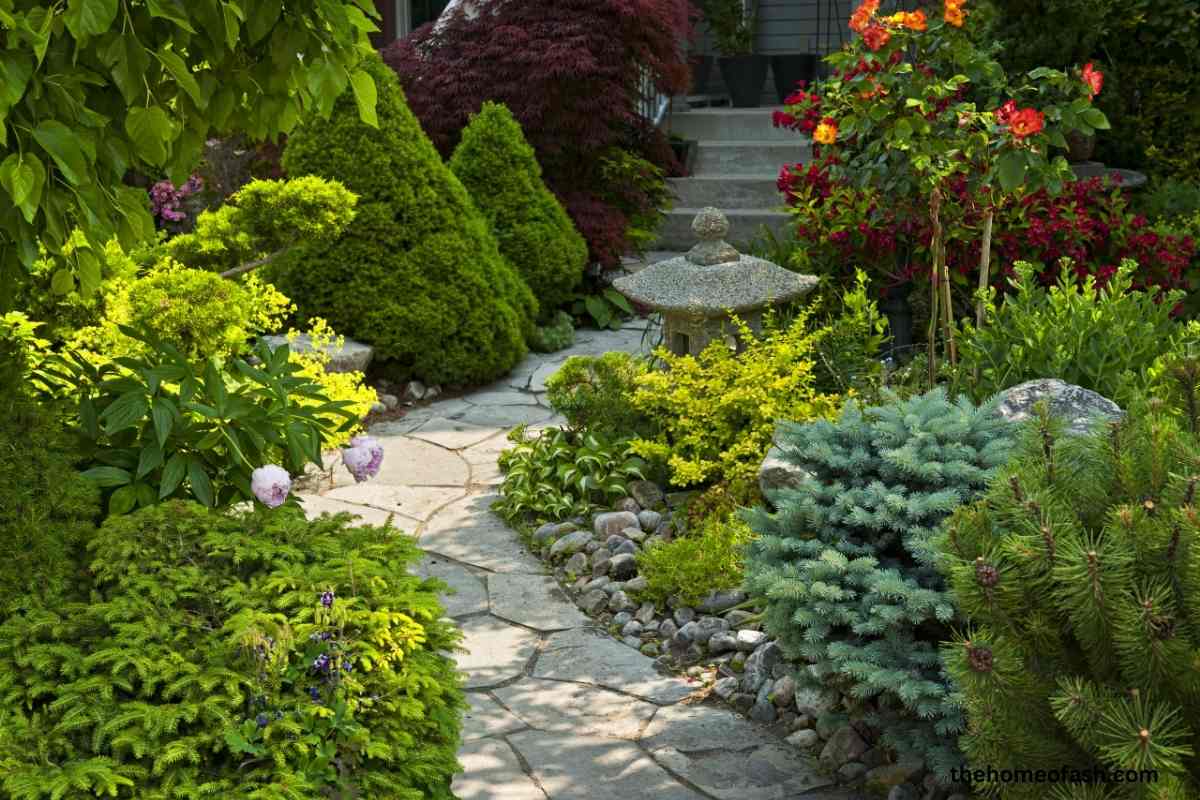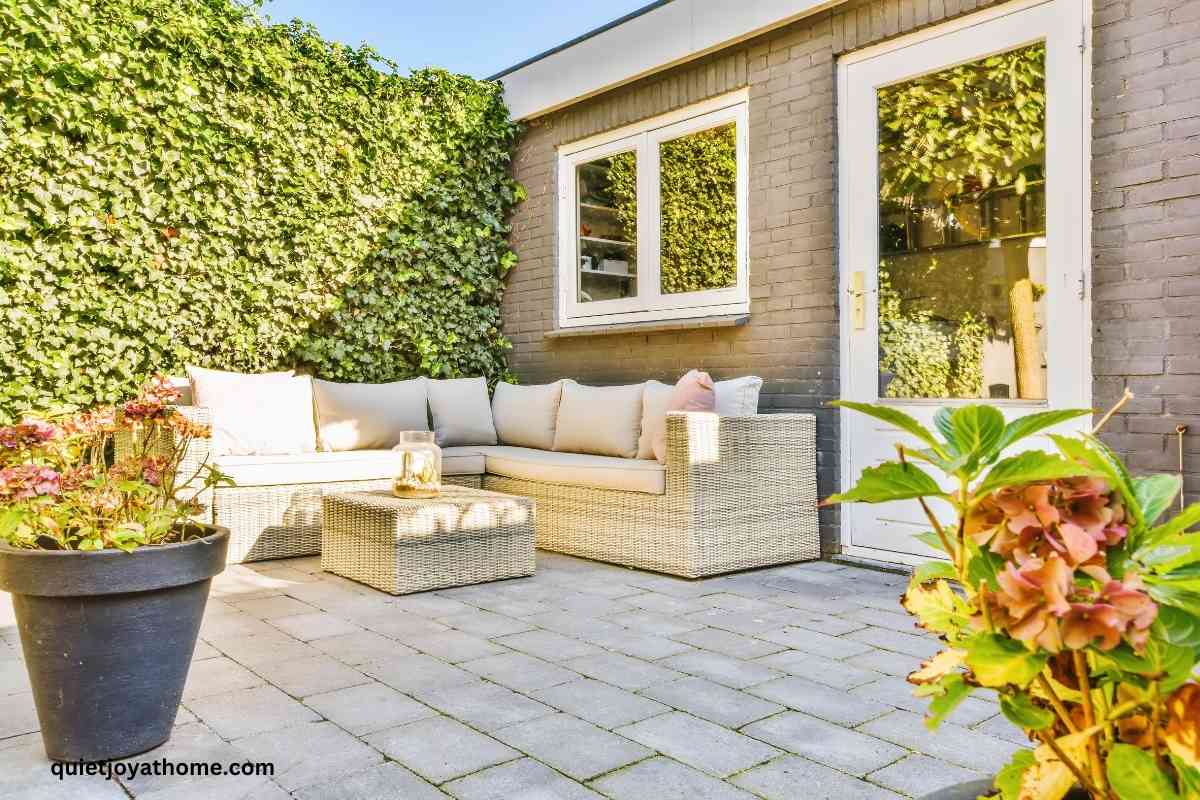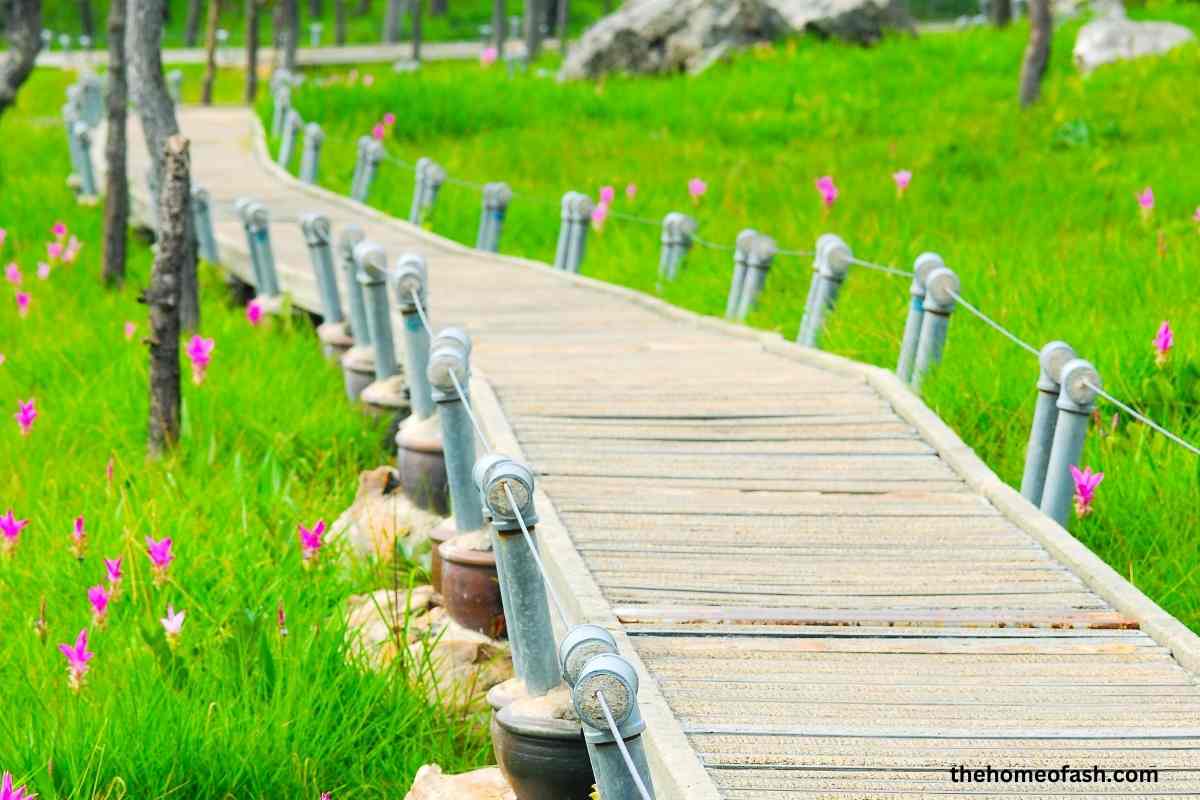Creating a beautiful garden involves careful consideration of every element, including walkways. In this article, I will explore 10 walkway ideas that can enhance the aesthetic appeal and functionality of your garden. Whether you’re looking for practicality or style, the right pathway can truly transform your outdoor space.

I believe that walkways are not just functional; they can also serve as stunning focal points in your garden design. From natural stone to decorative gravel, the choices are vast, and each option can bring a unique character to your landscape.
1) Stone Pathways
I love using stone pathways in my garden. They add a natural touch and create a charming route through the greenery.
Choosing different sizes and shapes of stones can create interesting patterns. I often mix textures to enhance visual appeal.
Stone pathways are durable and can withstand the elements. They bring a rustic feel that blends beautifully with plants and flowers.
2) Brick Walkways
I love the classic look of brick walkways in gardens. They add a timeless charm and blend well with various landscaping styles.
Bricks come in different colors and styles, allowing for creativity in layout. I enjoy creating patterns, which can enhance the visual appeal of my garden paths.
They are durable and can withstand weather changes. Maintaining them is relatively easy, making bricks a practical choice for any garden.
3) Gravel Paths
Gravel paths add a rustic charm to my garden. I love how easy they are to create and maintain.
I can choose different colors and sizes of gravel to match my garden’s style. They also provide excellent drainage, which is a big plus.
I find gravel paths inviting, merging seamlessly with surrounding plants and flowers. Plus, they are budget-friendly, making them a practical choice for any gardener.
4) Wooden Boardwalks
I find wooden boardwalks bring a rustic charm to any garden. They offer a natural look that blends well with greenery and plants.
These walkways can be easily customized to fit the garden’s layout. I love how they create a defined path while allowing space for surrounding plants to flourish.
5) Stepping Stones
Stepping stones add charm and functionality to any garden. I love using them to create a path that guides visitors through my greenery.
These stones come in various shapes and materials. I often choose natural stone for a more rustic feel or colored concrete for a modern look.
Arranging them at different intervals gives a playful vibe. This design invites exploration and makes my garden feel welcoming.
6) Mosaic Walks
I love the charm that mosaic walks bring to a garden. They offer a unique blend of color and creativity that can transform any pathway.
Creating a mosaic walk involves using small pieces of tile or stone to form patterns. I enjoy experimenting with different designs that reflect my personal style.
These walks are not only visually appealing but also durable. They withstand weather changes, making them a practical choice for outdoor spaces.
7) Cobblestone Lanes
I love the charm that cobblestone lanes bring to a garden. These paths create a rustic feel and encourage leisurely strolls through greenery.
Laying cobblestones allows for creativity with patterns and arrangements. I can easily personalize their design to suit my space.
With a bit of maintenance, these lanes can last for years. They add both beauty and functionality to any outdoor area.
8) Paver Paths
I love using pavers for garden paths. They provide a sturdy, long-lasting surface that can handle foot traffic easily.
Paver paths come in various shapes, sizes, and colors. This variety allows me to create a unique design that complements my garden style.
Easy to install, I can arrange them in creative patterns. They also allow for good drainage, which helps keep my garden healthy.
9) Grass Walkways
I love the natural look of grass walkways in my garden. They create a soft, inviting path that blends seamlessly with the surroundings.
Maintaining grass walkways can be straightforward. Regular mowing and watering keep the grass healthy and prevent overgrowth.
I appreciate how grass walkways feel underfoot, providing a comfortable walking experience. They bring a fresh, vibrant energy to outdoor spaces.
10) River Rock Paths
Creating a river rock path in my garden adds a natural touch. The smooth stones create a comfortable walking surface while blending seamlessly with plants.
I love how easy they are to install. Just lay down a landscaping fabric, arrange the rocks, and enjoy a stylish, durable pathway.
Benefits of Garden Walkways
Garden walkways bring together functionality and beauty, enhancing the garden experience. They can transform a simple outdoor space into a well-organized and visually appealing area.
Enhances Aesthetic Appeal
I find that walkways add structure and grace to a garden. They guide the eye and create a defined path that makes the landscape feel more organized.
Using materials like stone, brick, or gravel can give the walkways unique textures and colors. Curved paths can introduce a sense of whimsy, while straight lines offer a more formal look.
Incorporating plants along the edges can soften hard surfaces and enhance the natural beauty around the walkway. This blend of materials and plants creates an inviting environment that draws visitors in.
Improves Accessibility
Accessibility is crucial in any garden setting. Walkways provide stable footing and ensure easy movement, protecting both the garden and the gardener.
For those with mobility challenges, well-designed paths can make a big difference. They minimize obstacles and help avoid muddy spots after rain.
I often choose materials that are durable yet slip-resistant. This way, I create paths that are safe and practical, ensuring everyone can enjoy the garden without worry.
Defines Garden Areas
Walkways act as natural separators between different areas of the garden. By creating distinct sections, they help organize the space.
I like to use paths to delineate zones like flower beds, vegetable plots, or seating areas. This organization enhances usability, allowing me to navigate the garden effortlessly.
Clear boundaries can lead to a more cohesive design, making each area feel special and well-thought-out. The result is a harmonious space where every element has its place.
Choosing the Right Materials
Selecting the right materials for a walkway can greatly enhance the beauty and functionality of my garden. Each option has its unique qualities, advantages, and considerations, making it essential to match materials with the desired aesthetic and use.
Natural Stone
Natural stone adds timeless elegance to a garden walkway. Options like slate, granite, and sandstone offer durability and a range of colors and textures. The irregular shapes and patterns of natural stones give a unique charm to the path.
I find that stone is ideal for creating a rustic look. However, it can be more expensive than other options. Proper installation is crucial to avoid shifting and sinking over time. Adding sand or gravel as a base can help stabilize the stones and improve drainage.
Gravel
Gravel is a cost-effective and versatile choice for garden walkways. It comes in various sizes, colors, and textures, allowing for personalized designs. Plus, it promotes excellent drainage, preventing puddles from forming.
I appreciate that gravel is easy to maintain; I only need to replenish it occasionally. To keep it from spreading into the garden, I can use landscape edging. A layer of landscaping fabric beneath the gravel minimizes weed growth, ensuring a tidy appearance.
Brick
Brick walkways offer a classic and structured look. They are available in several colors and styles, allowing for creative patterns. The durability of brick means it can withstand heavy foot traffic with ease.
I enjoy the charm of a herringbone pattern or other intricate designs. While installation requires precision, the end result is visually appealing. I also find that adding sand between the bricks helps with stability and prevents weed growth.
Wood
Wood provides a warm, natural element to garden paths. I often use pressure-treated wood, cedar, or redwood for durability. Wooden walkways can be creatively designed with boards or planks, fitting seamlessly into a garden’s aesthetic.
However, I must consider that wood requires maintenance to prevent rot and warping. Regular sealing and staining can prolong its lifespan. Using a wood type like composite can reduce upkeep while mimicking the look of real wood.
Concrete
Concrete walkways are incredibly versatile. They can be poured in various shapes and patterns to complement any garden design. I appreciate the ability to add color or texture through staining or stamping.
Though concrete may seem plain, I can create decorative elements like aggregates or textures. It is durable and lasts a long time, making it a great investment. However, cracks can develop over time, so using expansion joints during installation is essential to accommodate movement.
Maintenance Tips for Garden Walkways
Keeping your garden walkways in good shape enhances both their appearance and functionality. Regular maintenance, including cleaning, weed control, and prompt repairs, can extend the life of your walkways and ensure they remain safe to use.
Regular Cleaning
I make it a habit to clean my garden walkways at least once a month. This keeps them free from dirt, debris, and mold, which can cause slipping hazards.
For hard surfaces like stone or brick, I use a pressure washer to remove stubborn stains. If you prefer a gentler method, a broom followed by a hose can work well too. Don’t forget to tackle built-up grime or algae with a diluted vinegar solution.
For softer materials, such as gravel or mulch, a simple raking can suffice to maintain a neat look. Regular cleaning not only keeps the area safe but also enhances the beauty of my garden.
Weed Control
Weeds can quickly take over walkways, making them look untidy and potentially damaging the surface. I regularly inspect my walkways for any signs of unwanted growth.
Using mulch or landscape fabric under gravel paths helps to prevent weeds from breaking through the surface. If I spot any weeds, I pull them out by hand or use a weeding tool. I find that addressing weeds early prevents larger infestations later.
For persistent weed issues, I might consider applying a natural herbicide. It’s important to choose products that won’t harm surrounding plants or soil health.
Repair and Replacement
Damage to walkways can happen over time due to weather conditions or regular wear and tear. I always keep an eye out for cracks or loose stones that need attention.
For minor repairs, filling cracks with a suitable filler material works well. If blocks or stones are loose, I simply lift them, add some gravel beneath, and reset them in place.
In cases where a section is severely damaged, it may be time to replace it. I measure the area and select matching materials to maintain a cohesive look in my garden.
Addressing repairs promptly prevents further damage and keeps my walkways safe and visually appealing.




